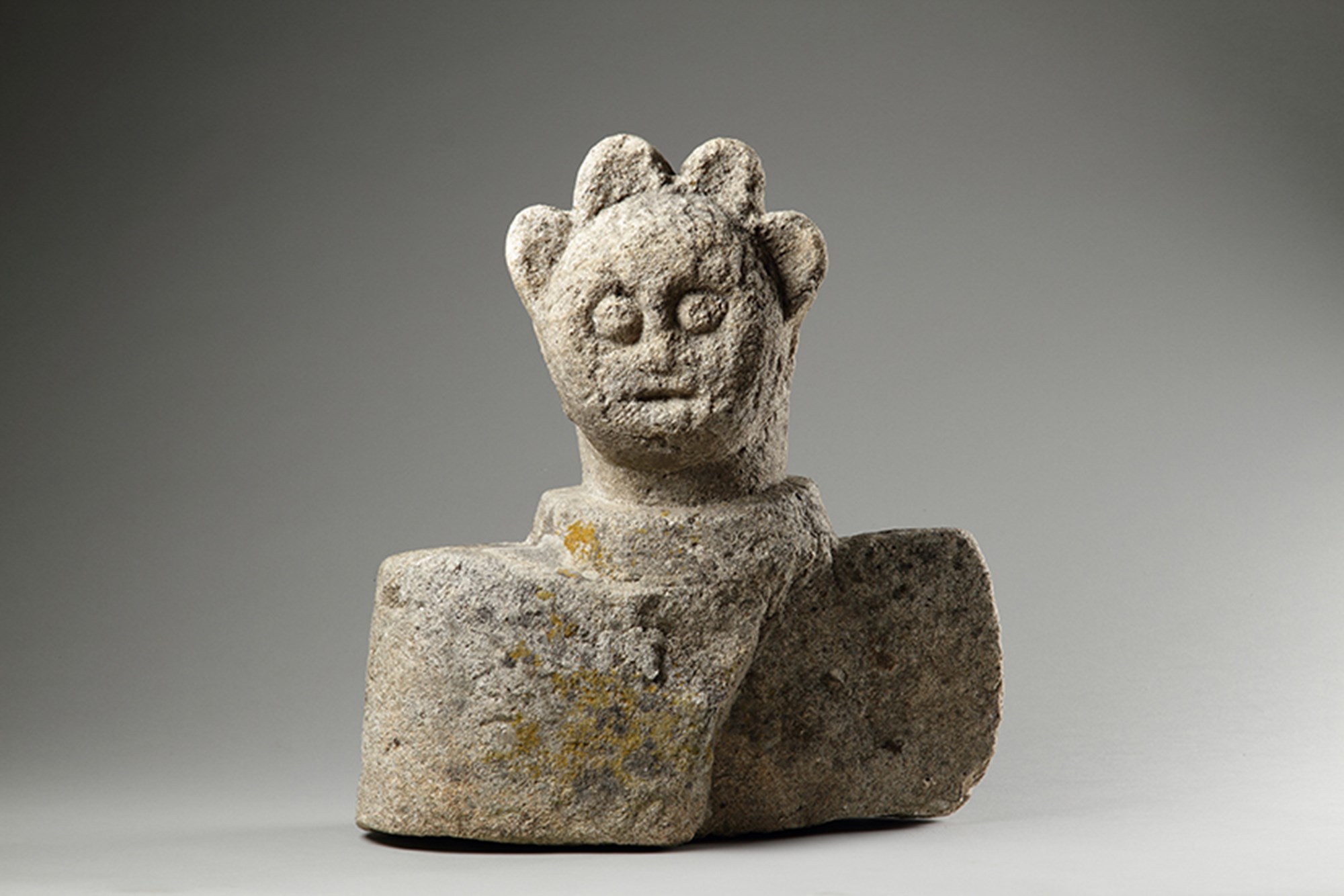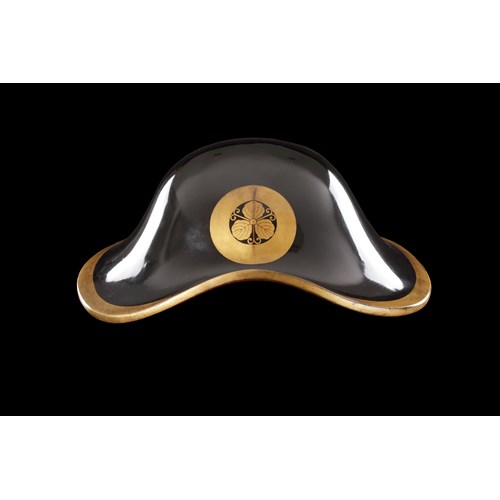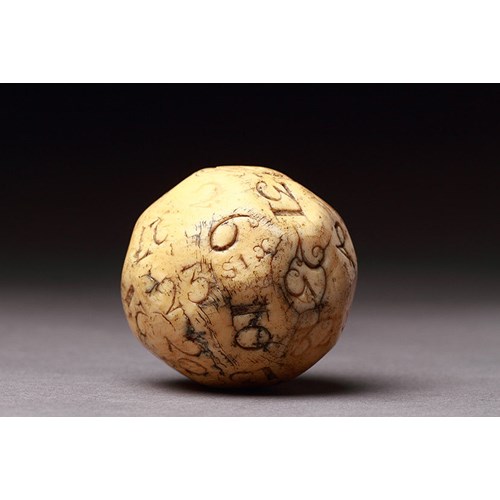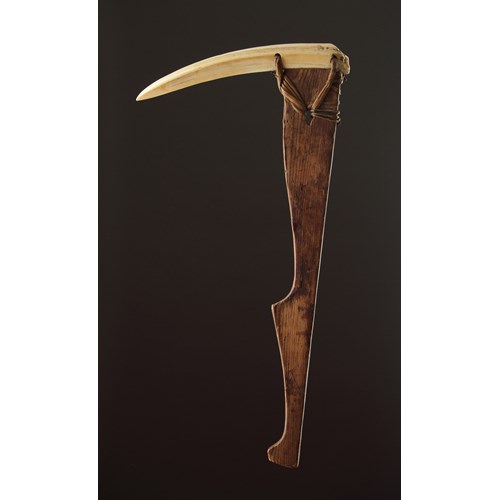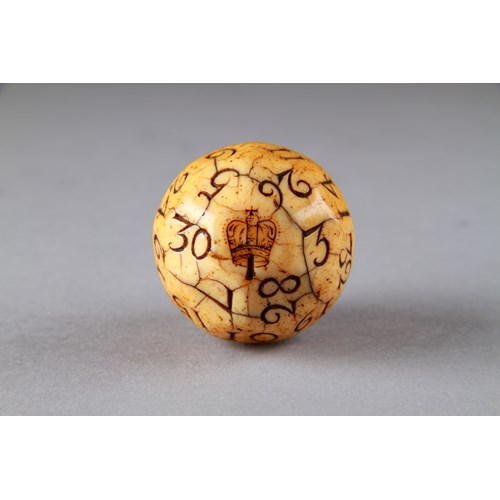Rare Ancient British Celtic Limestone Bust of a Radiate Deity ‘Sol Invicta’
Period 100 BC - 100 AD
Origin British, Britain
Medium Limestone
Dimension 42 x 40 x 20 cm (16¹/₂ x 15³/₄ x 7⁷/₈ inches)
1st Century BC - 1st Century AD
Size: 42cm high, 40cm wide, 20cm deep - 16½ ins high, 15¾ ins wide, 8 ins deep
Period: 100 BC - 100 AD
Origin: British, Britain
Medium: Limestone
Dimension: 42 x 40 x 20 cm (16¹/₂ x 15³/₄ x 7⁷/₈ inches)
Provenance: Ex Private collection West Country U.K.
Ex Finch and Co, item number 1, catalogue number 30, Summer 2018
Ex Private collection
Literature: cf: Dr Anne Ross ‘Pagan Celtic Britain’ no. 916, for a similar Stone Radiate Deity
The genius of Celtic art lay in the moulding together of several disparate styles into something quite unique and distinctive. In both the Celtic and later classical religion, the sun god ‘Sol Invicta’ ‘the unconquered sun’ or Apollo as the Romano British knew him, had oracular and healing abilities. The human head was regarded by the Celts as being symbolic of divinity and otherworld powers, and the theme of the head which flows through all Celtic religious tradition is not a separate cult, but bound up with all other Celtic cults.
The Celts perceived the presence of supernatural power as integral to their world. The sun, the sky and the dark places underground all had their own spirits. Every mountain, river, spring, marsh, bog, tree and rocky outcrop was endowed with divinity. A similar relief of this deity was found in Armagh in Northern Ireland and depicts the god with emphatically radiate hair. This relief was recovered from the site of the Protestant Cathedral in the city when it was restored and rebuilt in 1840. The hair forms stiff strands which radiate round the head. Another stone relief from Whitley Castle in Northumberland is known as ‘Apollo’. He is carved as a simplistic radiate figure and probably pertains to a native Celtic god ‘Maponus’ rather than to the classical Roman deity, Apollo with whom he shared the skills of music and poetry.
More artworks from the Gallery


